ZeroWater Pitcher 23 Cup In-depth Review
There are reasons why this dispenser's well-liked. But it has a few caveats that you should take into consideration before buying.
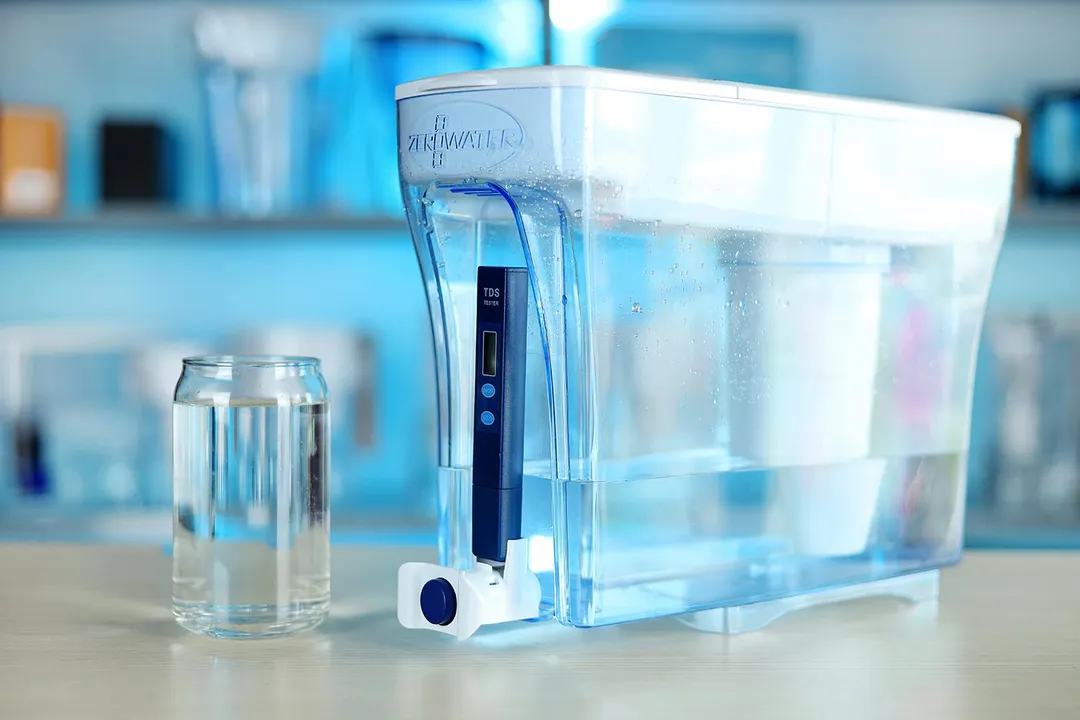
Overall Verdict
The ZeroWater 23 water filter dispenser features a substantial filter piece that certifiably does a great job at removing chlorine. True to its name, the filter was able to reduce the Total Dissolved Solid (TDS) down to 0 ppm. However, this performance comes with a cost: the filter’s less-than-stellar flow rate. While the material quality and design are nothing to write home about, it is easy to use as a whole. Its biggest shortcoming is at the spigot, which has an unusual design that can easily lead to spillage during dispensing.
Overall, the dispenser can certainly get the job done. But given its slow flow rate and small reservoir capacity, it’s probably not the best choice for a big household where higher filtering performance and capacity are crucial.
Things We Like
- Zero TDS
- Included TDS meter
- Hinged lid for easy refill
- Large capacity
Things We Don’t Like
- Slow flow rate
- Awkward spigot
- Small reservoir in proportion with capacity
Earlier, we tested the 10-cup version of the ZeroWater water filter dispenser, which did very well in terms of filtering performance, but suffered from poor build quality and usability scores. The fact that it could bring the total dissolved solids (TDS) level down to 0 was impressive, but was not enough to land it a spot in our best filter pitchers collection.
The 23 cup dispenser has a different size and design, but looks pretty much identical in terms of material and filter. Will it be a better choice than its small counterpart? To answer this key question, we put the dispenser through the same performance and usability tests as all other pitchers we’ve had our hands on, including the 10-cup version. You can see how it fares in this article!
Key Specs
Where to Buy Price at publication $34.15
*You help support HealthyKitchen101's product testing and reviews by purchasing from our retail partners.
Compared to Other Water Filter Pitchers
5.3 Performance
The ZeroWater filter piece on this dispenser offers very consistent performance, mirroring the efficacy of the one found in the 10-cup pitcher. It did an excellent job at filtering out a high concentration of chlorine and taking out off-tasting dissolved solids to produce more refreshing water. Unfortunately, its subpar flow rate combined with a small reservoir-to-water-tank ratio, this dispenser will need to be refilled quite often.
8.0 Chlorine

The filter on this dispenser was able to remove most of the chlorine from our test water, which was highly chlorinated with a concentration of 10+ mg/l, and brought it to a safe level.
The filter is also certified to reduce lead and other heavy metals, although we were unable to verify these claims due to limitations in our testing capabilities.
1.0 Flow Rate

The flow rate is rather disappointing. It took a long time for the water to work through the densely-packed filter. The reservoir, while large, is shallow, so the flow rate does not benefit much from the aid of gravity. Water flow was faster at first, but slowed down significantly as the reservoir emptied.
At an average flow rate of 0.9 ml/s, it takes the ZeroWater a whopping 4 minutes on average to fill a standard glass of water. If you plan to use it at home, be sure to fill it in advance.
9.0 Taste & Smell

Consistent with its advertising claims, the ZeroWater filter really did remove all the TDS that could be detected by the accompanying meter. Most others only reduced the TDS by 25 - 35% in our test.
This resulted in a crisp and subtly acidic water taste, which gained a 9/10 from our three testers.
8.0 Design
The ZeroWater filter dispenser isn’t made from premium plastic, but it’s reassuringly BPA-free and feels durable. The filter piece is disposable. In general, the filter has a simple and effective design, similar to most dispensers of this type. The differences lie in its inclusion of a TDS meter and an innovative, albeit somewhat functionally problematic spigot design (more on that later.)
In the Box
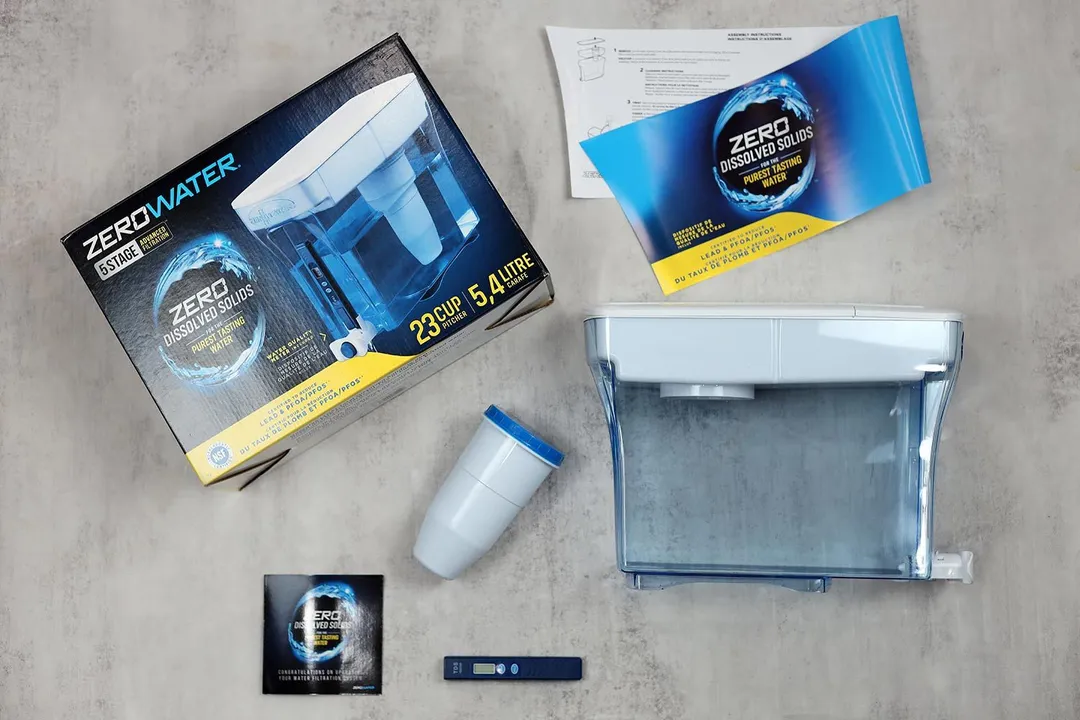
- The ZeroWater 23 cup water filter dispenser
- ZeroWater filter piece
- TDS meter
- Instruction manuals
The Zerowater 23 cup dispenser comes in a colorful cardboard box. The manuals are featured in English and French and are available in digital format online.
Dimensions
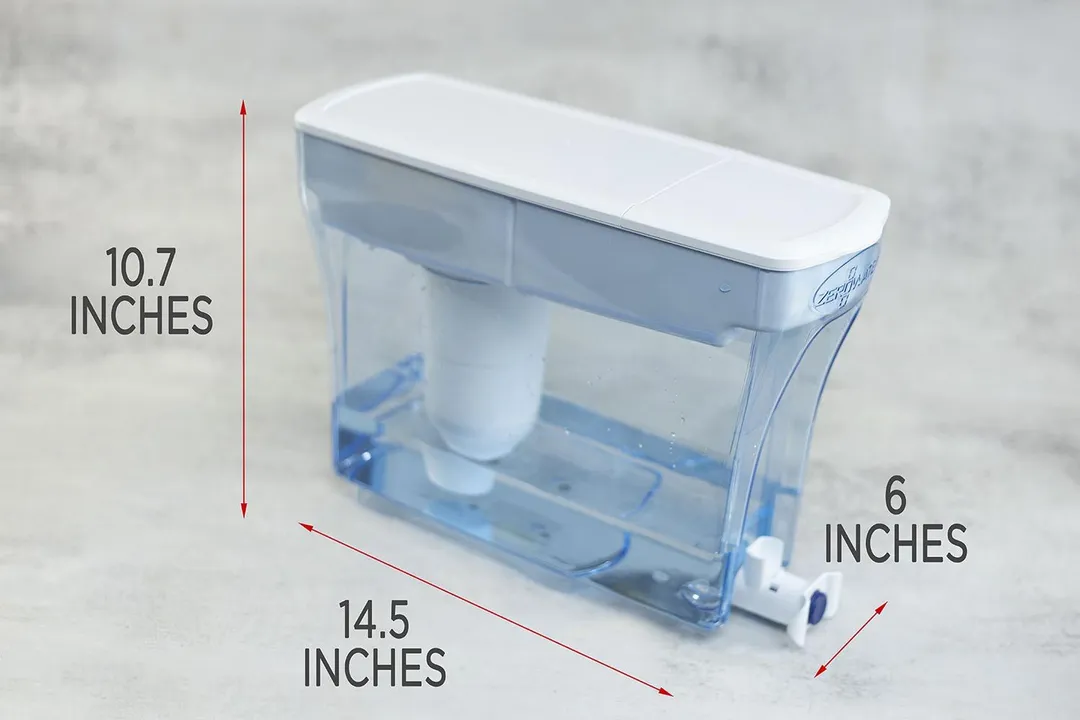
7.5 Build Quality
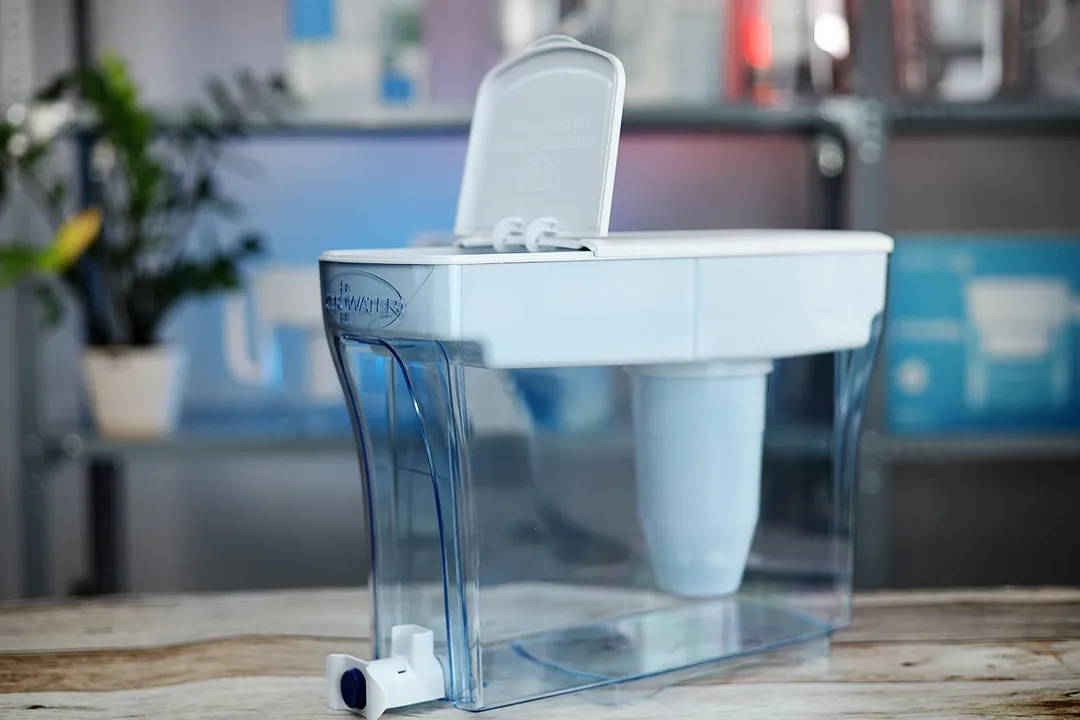
After testing the ZeroWater 10-cup pitcher and was disappointed in its build quality, we didn’t have great expectations for this model. Fortunately, the 23-cup dispenser, while made with similar materials, enjoys better craftsmanship. Its corners are softer, and we found no excess materials on the lid, which was the case with the 10-cup pitcher.
We appreciated the dispenser’s sturdy construction with thick side walls (unlike the Brita Ultramax’s), which makes it feel a lot more durable. The handles are on its front and back ends. While it may not be the most attractive option on the market, the blueish housing and curves on either end make it look less like a fish tank than its counterparts.
8.5 Conveniences



The ZeroWater dispenser can fit nicely in the cool compartment of your fridge, however, the size and position of its grips may take up more space than you might think. The lid has two flaps, allowing you to refill without taking the unit out of the fridge.
Instead of a typical filter life indicator that estimates the filter life by time or amount of water used, the ZeroWater dispenser comes with a TDS meter. It tests the actual water quality and you’re recommended to change the filter when the TDS value hits 006. This is impressively low considering how a safe TDS level can go up to 300 ppm. The meter is easy to use and has a bracket for storage right on the spigot.
8.0 Filter

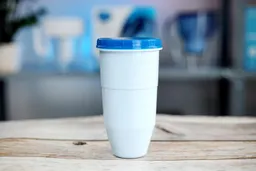
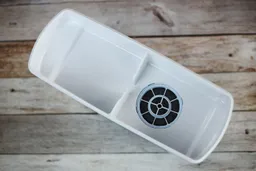
The ZeroWater filter piece can last anywhere from one to several months depending on your tap water quality. It’s made from BPA-free plastic that feels quite cheap, but considering how it’s to be replaced once every few months, the cheap quality shouldn’t pose too much of a problem. Although the flow rate wasn’t quite as fast as we would like, it was stable, and clogging was never an issue throughout our testing process.
7.7 Usability
If you’ve ever used a pitcher, you shouldn’t have any problem using the ZeroWater 23 cup dispenser. Assembling, refilling, and cleaning are all straightforward. The spigot design requires you to be a bit attentive while dispensing, but it gets easier with practice. Due to its size and weight, certain people with weaker wrists may have difficulty moving the dispenser around.
7.2 Assembling
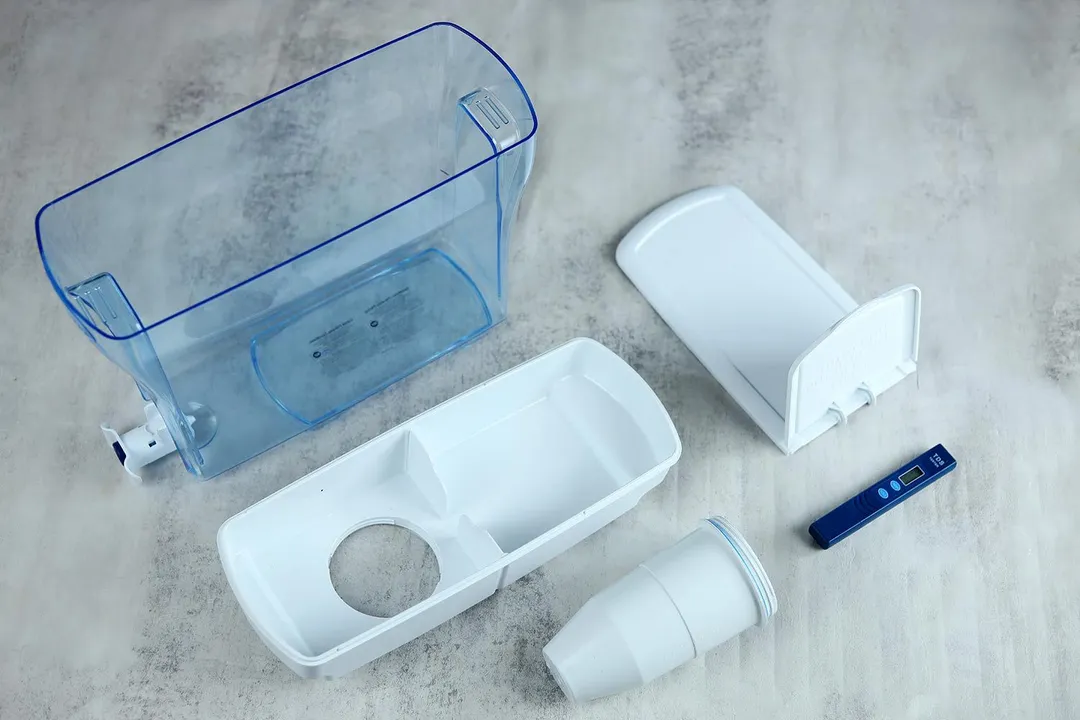
Assembling the ZeroWater dispenser is easy since it doesn’t come with too many parts, though the filter piece was a bit tricky to install compared to most filters we’ve tested. Its large size and slippery plastic shell make fitting it challenging, especially for someone with small fingers. The same goes when you have to unscrew the filter piece to replace it. The task can be rather difficult, especially now that the filter’s wet.
7.7 Refilling
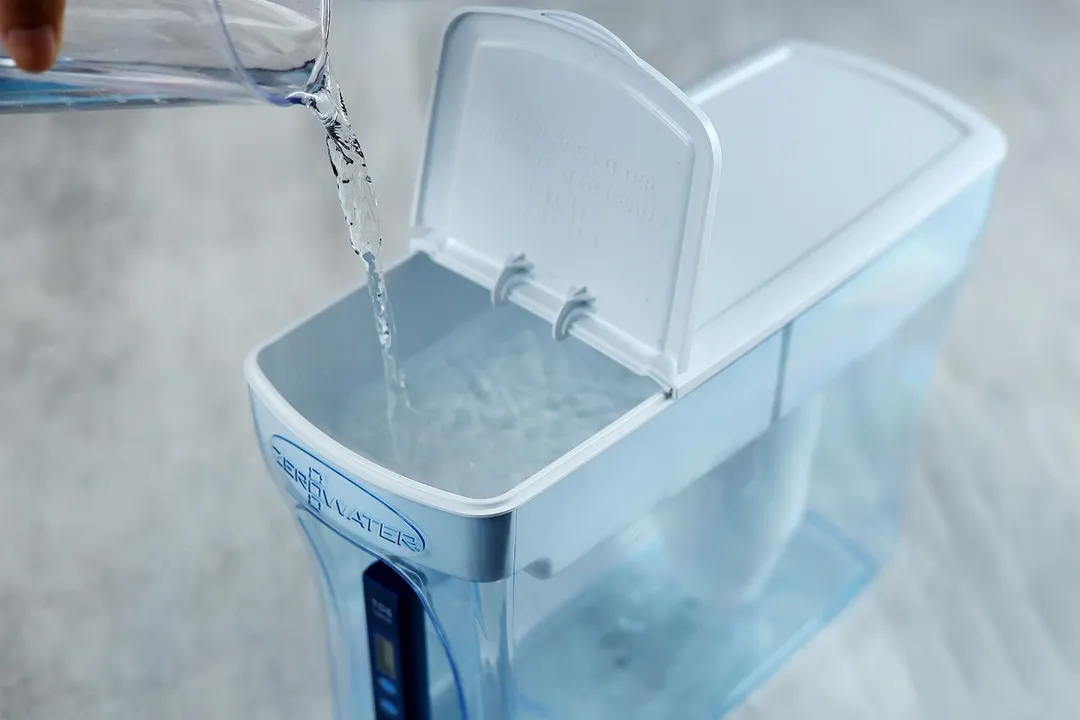
The convenient flap lid means you can refill the ZeroWater dispenser without removing the lid, or even taking it out of the fridge.
The unfiltered water reservoir is quite small compared to the filtered water tank. As a result, you’ll have to refill multiple times before the tank reaches full capacity. That said, the reservoir can hold 2,700 ml of water at a time, which is likely enough drinking water for two people through the day.
7.7 Dispensing
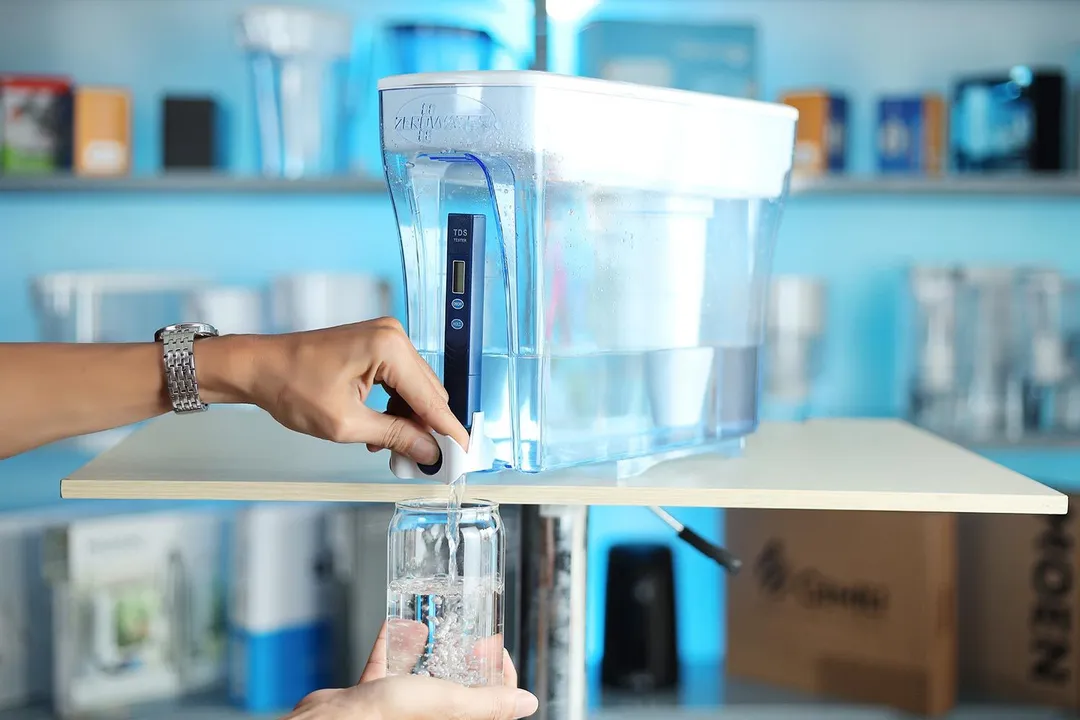
To dispense water, press and hold the button on the spigot at the front of the ZeroWater dispenser. It’s a convenient way to get your fill, plus the flow is controllable. Our only grievance is that the spigot can’t be used hands-free. Be sure to place your glass all the way in under the spigot, since the dispensing nozzle is positioned slightly toward the back.
9.0 Cleaning
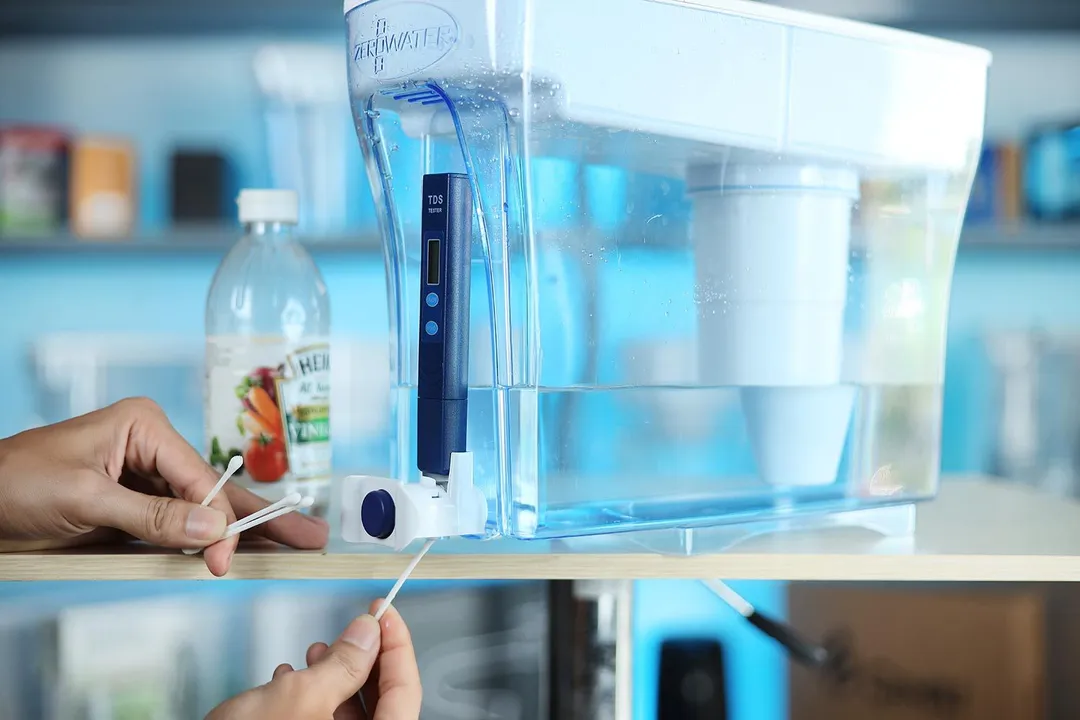
The ZeroWater dispenser has more nooks and crannies than a Brita, but it’s still quite easy to wash by hand. As with other dispensers, the spigot is the trickiest part to clean. We recommend using a diluted vinegar solution to disinfect and clean it.
Behind the review
Anh Ngo is a writer with 9 years experience at different media outlets, covering from public news and events to product testing and analysis. At HealthyKitchen101, she works across different departments, communicating closely with its network of writers, editors, and health, tech, and search engine experts to provide a meaningful and pleasant reading experience for visitors.
Lap is Head of the Research, Testing, and Review Team (RTR Team) at HealthyKitchen101.com, where he directs and supervises the testing of kitchen gadgets and appliances.
Nguyen Ntk is a graphic designer, photographer, and videographer whose philosophy centers around respecting and celebrating the beauty of reality. Through his lenses, Nguyen strives to capture the true essence of objects and events, showcasing and highlighting authentic features without distortion or exaggeration.


